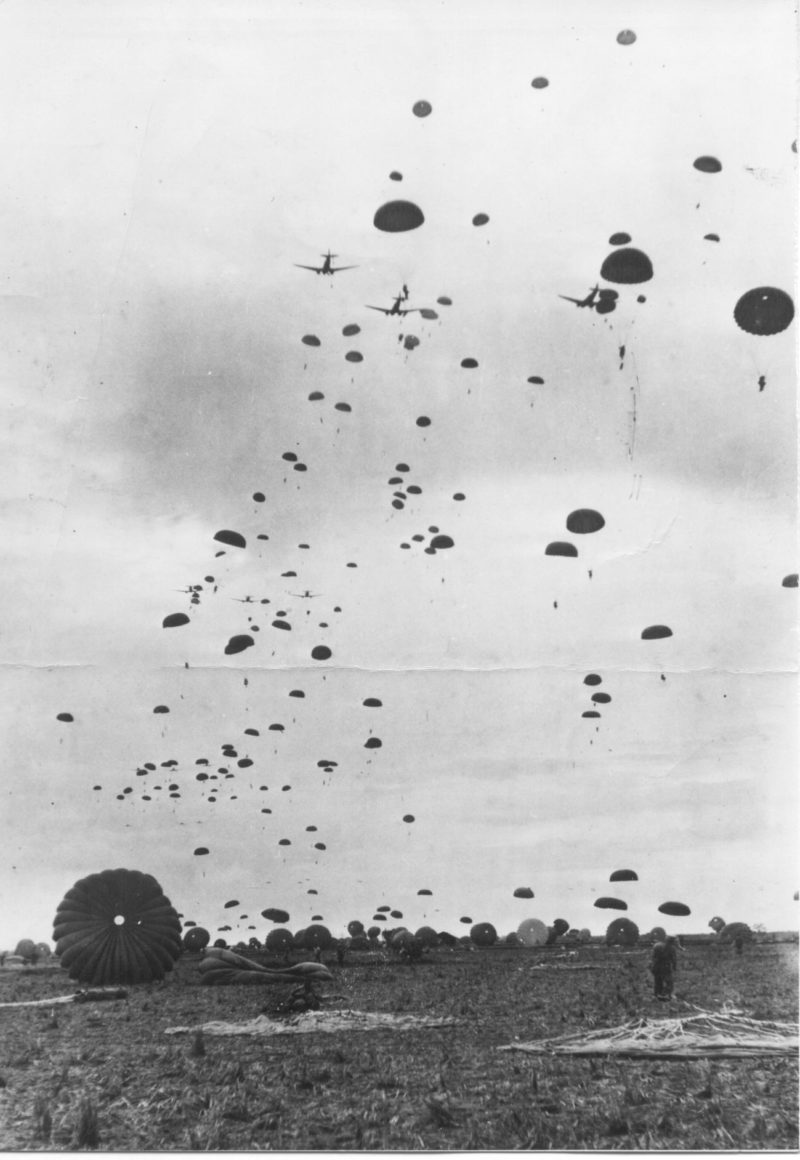Airborne Gurkhas and Operation Dracula – May 1st 1945

Airborne Gurkhas and Operation Dracula – May 1st 1945
Towards the end of November 1942 3/7th Gurkha Rifles was identified for reforming as a Parachute Battalion. By June 1943, 373 men together with 27 Gurkha and British Officers were selected having successfully completed the training. Volunteers had come from other Gurkha regiments to bring the new unit up to strength and the Battalion was re-designated 154 (Gurkha) Parachute Battalion.
Later in the war, after the decisive battles of Meiktila and Mandalay in March 1945, plans for the final conquest of Burma and the recapture of Malaya were moved forward. Key to these plans was the recapture of Rangoon by May and the onset of Monsoon rains. This operation became known as Operation Dracula.
Rangoon was heavily defended, ruling out a purely land-based assault in favour of a joint amphibious-airborne one. This brought its own problems, as a number of airfields and coastal batteries needed to be captured before seaborne troops could land. In particular, the Rangoon River needed to be cleared of mines, which could only be accomplished through the prior destruction of an artillery battery known as Elephant Point on the west bank of the river. Weather conditions prevented deploying troops by sea, and so an airdrop was planned, with troops drawn from across the available parachute units and including several companies from the 154 (Gurkha) Parachute Battalion.
Despite logistical problems on 1st May 1945 154 (Gurkha) Parachute Battalion took part in the successful drop at Elephant Point beginning in the early hours. The over 700 Gurkha troops landed on time and on target, and in fact progressed ahead of schedule through their objectives. The force finally managed to capture the last points of resistance by 15:30 that day, with a bunker of Elephant Point falling to a flamethrower assault.
The Indian and Gurkha troops actions at Elephant Point out-performed all expectations and removed the danger to 26 Indian Division’s intended landing from the sea to relieve Rangoon, thus allowing the remainder of Operation Dracula to proceed as planned. 154 (Gurkha) Parachute Battalion reached Rangoon two days later on May 3rd, Japanese troops having abandoned Rangoon to the approaching Allied forces.
The airborne aspects of Operation Dracula were some of the most important air assaults of the war in Burma and proved to be a model example of the effectiveness of airborne Gurkha soldiers. Today, a battalion of The Royal Gurkha Rifles forms part of the UK’s 16 Air Assault Brigade.

